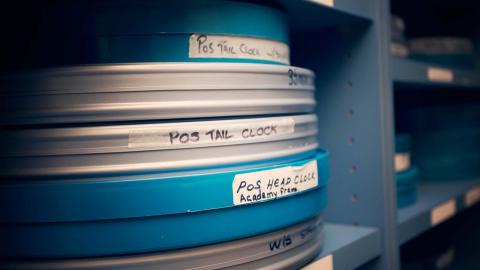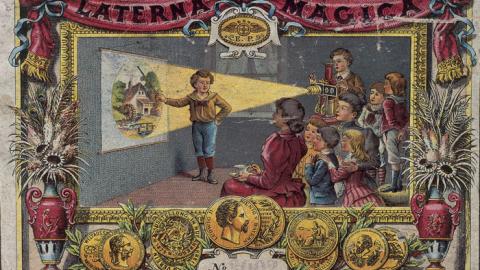
Film collection hazards
One of the joys of being a film curator at the National Film and Sound Archive is that every collection you work on has some moments of excitement. Mostly the excitement is about the film’s content or perhaps a surprise inclusion added by the donor, but sometimes the surprise is caused by the condition of the film. As the person responsible for bringing the collection in you are also the first to see if there are any problems with the items. You are the front line and must be ready to deal with anything.
The negotiation for a collection often occurs via correspondence or telephone calls. The items are then packed and a courier collects the boxes for delivery to our warehouse. But film is an organic material, so it is prone to many physical problems which eventually can lead to its total decomposition. That is why when we talk with a donor, we ask about the film’s condition and for information regarding where the items have been stored. Are they are damaged in any way? Are they stored near water? Do they have a vinegar-like odour? Very often the donor is unable to provide much information, but that’s not an issue. After all, we are professionals who can identify and deal with a myriad of problems.
As you can never be sure what a collection will bring until you begin to work with it, we have to be prepared for anything. That includes physical deterioration. And so, with our cleaning tools and winding skills we can handle most of what we find. using accepted conservation practices. Sometimes though, a film requires extra special care simply so we can see what is on it.
Over the years I have sorted through my share of collections with physical problems. For example, a large collection of films that had been stored in a chicken shed were covered in feathers and droppings. With evidence of water damage there were also fears that the films would be heavily covered in mould. To our delight these titles, rarely seen outside their country of origin, were in excellent condition and were accepted into the National Collection.
Receiving a delivery of nitrate films also brings with it an element of danger. The last stages of decomposition can cause film to be combustible, but each stage along the way has its own challenges. One particularly memorable unidentified film had three different stages of decomposition, with its middle part crystallised. Eventually we were able to get through to the end of the reel, where we found a rare newsreel from the 1920s.
More recently, a collection of film prints spanning from the 1970s up to 2003 arrived at the warehouse. It wasn’t expected that there would be physical issues with the films. Working with a colleague, Murray Kirkland, and upon opening the boxes, all prints were found to have light mould across the outside of the spool. This kind of light mould was easily treated, but there was a standout item: a box, held together precariously with tape. The fabric of the original box was flaking away, showing signs of severe water damage.
Crumbling box held together with tape, showing signs of water damage
Crumbling box held together with tape, showing signs of water damage
As the box began to collapse, the film could be seen to be heavily water damaged. Closer examination revealed webbing covered in tiny spiders
As the box began to collapse, the film could be seen to be heavily water damaged. Closer examination revealed webbing covered in tiny spiders
Wrapped in plastic for many years, these films have started to turn to liquid
The decomposition of this nitrate film has eaten away the metal edges of the film reel. After the crystalised film was scraped away the remaining film was in good condition and was able to be wound off and has now been added to the collection
As we began to ease away the flaking box it became quite apparent we had a living infestation. Webbing, running across the edges of the red film reels, held a recently hatched nest of tiny weenie baby spiders. As the film was Peter Jackson’s Bad Taste, it somehow seemed appropriate – but it also made us nervous of what else we might find. In fact, once out of its box the film was found to be heavily encrusted with mould and was so stuck together due to severe water damage that the image, where you could prise it apart, had dissolved.
Quite often conservation practices are able to recover the film and it can be screened again. But when the conservators, shaking their heads, say, ‘Sorry, there’s nothing I can do’, we have to go back to the donor to discuss the most appropriate options. Fortunately, in this case, another print of the film was available and has since been accepted into the collection.
The film received was found to be heavily encrusted with mould and was so stuck together due to severe water damage that the image, where you could prise it apart, had dissolved.
The National Film and Sound Archive of Australia acknowledges Australia’s Aboriginal and Torres Strait Islander peoples as the Traditional Custodians of the land on which we work and live and gives respect to their Elders both past and present.


